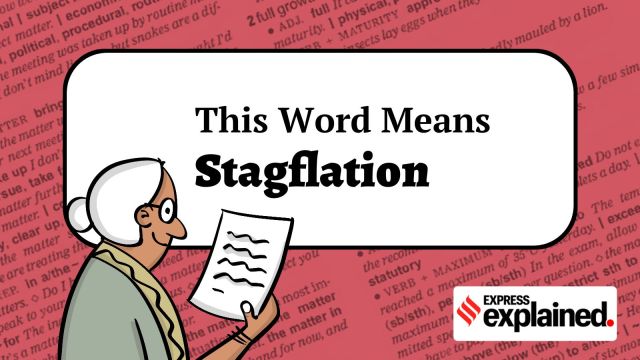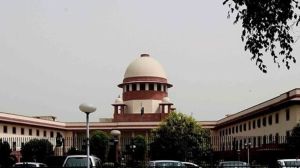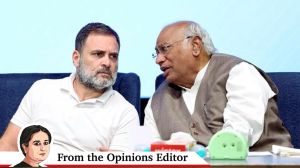This Word Means: Stagflation
Every day, 500 words on a word (or expression) that has appeared in The Indian Express
 Stagflation is an economic situation characterised by economic stagnation, meaning slow economic growth typically accompanied by an increase in unemployment, and inflation, meaning a persistent rise in the general price level.
Stagflation is an economic situation characterised by economic stagnation, meaning slow economic growth typically accompanied by an increase in unemployment, and inflation, meaning a persistent rise in the general price level.WHY NOW?
US Fed Chair Jerome Powell on Friday (April 4) raised concern that President Donald Trump’s “Liberation Day” tariffs could lead to stagflation.
“It is now becoming clear that the tariff increases will be significantly larger than expected,” Powell said Friday. “The same is likely to be true of the economic effects, which will include higher inflation and slower growth.”
Addressing a business conference in Virginia, Powell has noted that the outlook for the US economy remains still highly uncertain, with “elevated risks of both higher unemployment and higher inflation.”
WHAT IS STAGFLATION?
Essentially, it means stagnation plus inflation. Stagflation is described as an economic situation characterised by economic stagnation, meaning slow economic growth typically accompanied by an increase in unemployment, and inflation, meaning a persistent rise in the general price level.
WHY IS STAGFLATION A CONCERN?
Typically, inflation occurs during periods of rapid economic growth, with the demand for goods outpacing their availability, increasing their prices. Similarly, during a period of economic decline, inflation falls as there is less money chasing the same goods.
Stagflation presents a precarious situation for policymakers as policies that address either of these issues can end up worsening the other. An increase in unemployment amid a decline in economic growth is accompanied by a sluggish rise in incomes, while making sense of rising inflation. This puts dual pressures on the people, even as their purchasing power is reduced.
BEHIND THE NAME
Iain Macleod, a British Conservative Party MP is credited with coining the phrase in November 1965. He said, “We now have the worst of both worlds— not just inflation on the one side or stagnation on the other, but both of them together. We have a sort of “stagflation” situation. And history, in modern terms, is indeed being made.”
THE MOST ENDURING EXAMPLE
Until now, stagflation has resulted from external threats. Most notable among these is the oil price shock of the 1970s.
The Organisation of Petroleum Exporting Countries (OPEC) declared an embargo against Western countries in 1973, causing global oil prices to rise dramatically. Given that oil is the bedrock for all other production, this drove up transportation costs, costs of production and distribution. This snowballed as the prices of commodities increased worldwide, resulting in inflation. By 1974, global oil prices were up 70%, while inflation in the US reached double-digit numbers.
Thus, the US experienced lower economic growth, increased unemployment, and a higher price level.
WHAT RISK DOES THE US NOW FACE?
According to Powell, at least a temporary rise in inflation is “highly likely” due to Trump’s tariffs. Whether these tariffs could have a “more persistent” impact would depend on factors like the extent of the tariffs themselves being implemented, the size of the economic effects, and how quickly and fully these tariffs would be transferred to consumer prices.
Citibank flagged the stagflationary risk it had “downplayed over this past year”, while Goldman Sachs, UBS, Apollo and Bank of America had raised alarm in February, according to a Business Insider report.
More Explained
Must Read



EXPRESS OPINION
Apr 08: Latest News
- 01
- 02
- 03
- 04
- 05
























